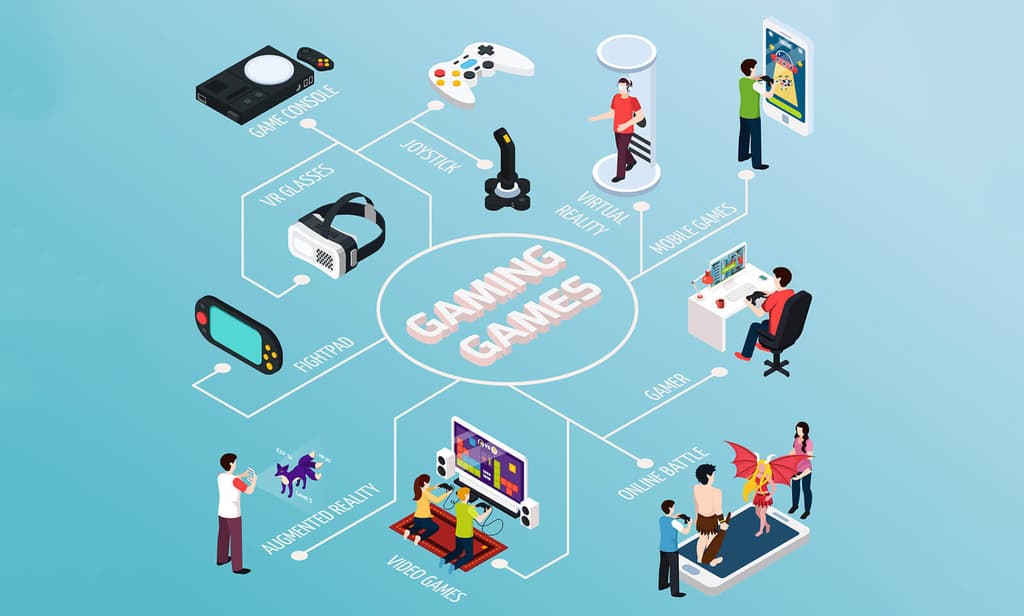The evolution of mobile game development has seen significant technological shifts, particularly the transition from Flash to HTML5. This change has brought about numerous improvements in game performance, compatibility, and overall user experience. Understanding this transition is crucial for developers looking to create engaging and efficient mobile games.
In this article, we will explore the journey from Flash to HTML5, examining the strengths and weaknesses of both technologies, and highlighting the key advancements that HTML5 has brought to the world of mobile gaming. Whether you are a beginner or an experienced professional, this comprehensive guide will provide valuable insights into the current state and future of mobile game development.
The Rise and Fall of Flash in Mobile Gaming
Flash technology was once the cornerstone of web-based gaming, providing developers with a powerful tool to create interactive and visually appealing games. Its ease of use and widespread support made it a popular choice for mobile game development in the early 2000s. However, Flash’s reliance on plugins and its performance limitations began to hinder its effectiveness in the rapidly evolving mobile landscape.
In the context of online gambling, Flash played a significant role in the development of many early casino games. Its ability to deliver rich graphics and animations made it an attractive option for developers. However, the rise of mobile gaming and the increasing demand for seamless, cross-platform experiences exposed Flash’s shortcomings, leading to a shift towards more versatile and efficient technologies.
Early Days: Flash as a Pioneer
Flash’s introduction revolutionized the world of online gaming. It enabled developers to create complex animations and interactive experiences that were previously difficult to achieve with HTML and JavaScript alone. This pioneering technology opened up new possibilities for web-based games, making them more accessible and enjoyable for users.
During its heyday, Flash was the go-to platform for many developers due to its robust authoring tools and wide browser compatibility. Games created with Flash could be easily embedded into websites, allowing for seamless distribution and playability. However, as the mobile market grew, the limitations of Flash became more apparent, prompting the search for a more adaptable solution.
Challenges Faced by Flash Technology
One of the primary challenges faced by Flash was its heavy reliance on external plugins. Users needed to install and regularly update the Flash Player to access Flash-based content, which often led to security vulnerabilities and a fragmented user experience. Additionally, Flash’s performance on mobile devices was subpar, with issues such as high battery consumption and slow loading times.
Another significant challenge was the lack of support from major tech companies. In 2010, Apple famously decided not to support Flash on its iOS devices, citing concerns over performance, security, and battery life. This decision marked the beginning of the end for Flash, as other companies followed suit, eventually leading to Adobe announcing the end-of-life for Flash Player in 2020.
The Advent of HTML5
HTML5 emerged as a powerful alternative to Flash, offering a wide range of features that addressed the shortcomings of its predecessor. As a markup language, HTML5 natively supported multimedia elements like audio and video, eliminating the need for external plugins. This made it an ideal choice for developing mobile games that required seamless, cross-platform compatibility.
The introduction of the Canvas API in HTML5 allowed developers to draw graphics and animations directly in the browser, providing a performance boost and greater control over game visuals. Additionally, HTML5’s support for offline storage and responsive design further enhanced its suitability for mobile game development, making it the new standard for web-based gaming.
Advantages of HTML5 Over Flash
HTML5 brought several key advantages over Flash, making it the preferred choice for modern mobile game development. One of the most significant benefits was its native support in web browsers, eliminating the need for plugins and ensuring a more secure and consistent user experience. This also meant that games developed with HTML5 could run smoothly across different devices and platforms.
Another major advantage was the improved performance and efficiency of HTML5 games. The Canvas API and WebGL enabled developers to create high-quality graphics and animations with lower resource consumption, resulting in faster loading times and longer battery life for mobile devices. Additionally, HTML5’s support for responsive design allowed games to adapt seamlessly to various screen sizes and orientations.

HTML5: A New Era for Mobile Games
The shift to HTML5 marked a new era in mobile game development, with developers leveraging its powerful features to create more engaging and interactive experiences. The ability to build games that worked seamlessly across different platforms and devices opened up new opportunities for reaching a broader audience.
HTML5 also enabled the integration of advanced features such as real-time multiplayer capabilities, offline gameplay, and social media connectivity. These innovations helped drive the popularity of mobile gaming, making it a dominant force in the entertainment industry. As a result, HTML5 has become the standard for modern game development, with a growing community of developers continuously pushing the boundaries of what is possible.
Key Features of HTML5 for Game Development
HTML5 offers a range of features that make it an ideal choice for mobile game development. Some of the most notable features include:
- Canvas API: Allows for dynamic, scriptable rendering of 2D shapes and images.
- WebGL: Provides a JavaScript API for rendering interactive 3D graphics within compatible web browsers.
- Audio API: Enables advanced audio features, including spatial audio and real-time sound manipulation.
- Local Storage: Allows games to store data locally on the user’s device for offline access.
- Responsive Design: Ensures that games adapt to different screen sizes and orientations.
These features, combined with the inherent flexibility and accessibility of HTML5, have made it the go-to technology for developers looking to create high-quality mobile games.
Aviator App
For enthusiasts of the innovative betting game Aviator, accessing the game through its dedicated app enhances the overall experience. The Aviator app download offers a seamless and interactive gaming environment, allowing users to place bets and watch their potential winnings increase as the airplane ascends. To download the app, users can visit their respective app store, search for “Aviator,” and download it directly to their smartphones or tablets. The app is designed to provide an intuitive user interface and smooth gameplay, ensuring that players can engage with the game efficiently and enjoyably, anytime and anywhere. This convenience mirrors the dynamic and fast-paced nature of the game itself, making it a favorite among modern online bettors.
Popular HTML5 Game Engines and Frameworks
Several game engines and frameworks have been developed to simplify the process of creating HTML5 games. These tools provide developers with pre-built components and libraries, enabling them to focus on game design and functionality rather than low-level programming. Some of the most popular HTML5 game engines and frameworks include:
- Phaser: A fast and versatile 2D game framework for making HTML5 games.
- Construct: A powerful game development platform that allows for the creation of games without coding.
- Babylon.js: A 3D engine that makes it easy to create stunning, interactive 3D games.
- Cocos2d-js: An open-source game engine that supports both 2D and 3D game development.
- Three.js: A JavaScript library that simplifies the creation of WebGL-based 3D graphics.
These tools have greatly contributed to the popularity and accessibility of HTML5 game development, making it possible for developers of all skill levels to create impressive mobile games.
Case Studies: Successful Transitions from Flash to HTML5
Several high-profile games have successfully transitioned from Flash to HTML5, demonstrating the benefits of the newer technology. One notable example is the game “Angry Birds,” which was originally developed in Flash but later ported to HTML5 to reach a wider audience. The HTML5 version offered improved performance and compatibility, allowing the game to be played on a variety of devices without the need for plugins.
Another example is the popular social game “FarmVille,” which also made the switch from Flash to HTML5. The transition allowed the game to continue thriving despite the decline of Flash, providing players with a more seamless and enjoyable gaming experience. These case studies highlight the advantages of HTML5 and its ability to breathe new life into existing games.
Optimizing HTML5 Games for Mobile Devices

Optimizing HTML5 games for mobile devices is essential to ensure a smooth and enjoyable user experience. Developers should focus on several key areas to achieve optimal performance, including:
- Minimizing resource consumption: Use efficient algorithms and data structures to reduce CPU and memory usage.
- Reducing load times: Implement techniques such as lazy loading and asset compression to speed up game loading times.
- Ensuring touch responsiveness: Design the game interface to be intuitive and responsive to touch inputs.
- Testing on multiple devices: Regularly test the game on a variety of devices to identify and fix compatibility issues.
By following these best practices, developers can create HTML5 games that perform well on a wide range of mobile devices, providing a consistent and enjoyable experience for all players.
Performance and Compatibility Considerations
When developing HTML5 games, it is important to consider performance and compatibility to ensure a positive user experience. One key aspect is the efficient use of resources, as mobile devices often have limited processing power and memory. Developers should optimize their code and assets to minimize resource consumption and improve performance.
Compatibility is another critical consideration, as HTML5 games need to run smoothly on a variety of devices and browsers. Developers should use feature detection and polyfills to ensure their games work across different platforms. Additionally, regularly testing the game on multiple devices can help identify and address any compatibility issues, ensuring a seamless experience for all users.
Future Trends in Mobile Game Development with HTML5
The future of mobile game development with HTML5 looks promising, with several trends emerging that are set to shape the industry. One such trend is the increasing use of WebAssembly, a binary instruction format that allows for near-native performance in web applications. This technology can significantly enhance the performance of HTML5 games, making them more competitive with native apps.
Another trend is the growing popularity of progressive web apps (PWAs), which combine the best features of web and native apps. PWAs offer improved performance, offline capabilities, and a more app-like user experience, making them an attractive option for mobile game developers. As these trends continue to evolve, HTML5 will remain at the forefront of mobile game development, driving innovation and expanding the possibilities for developers.
Conclusion: Embracing the Future of Mobile Gaming
The transition from Flash to HTML5 has marked a significant milestone in the evolution of mobile game development. HTML5’s advanced features, improved performance, and cross-platform compatibility have made it the preferred choice for modern developers, paving the way for a new era of mobile gaming.
As we look to the future, it is clear that HTML5 will continue to play a crucial role in the industry, driving innovation and enabling developers to create more engaging and interactive experiences. By embracing HTML5 and staying abreast of emerging trends, developers can ensure their games remain competitive and captivating in an ever-changing digital landscape.



